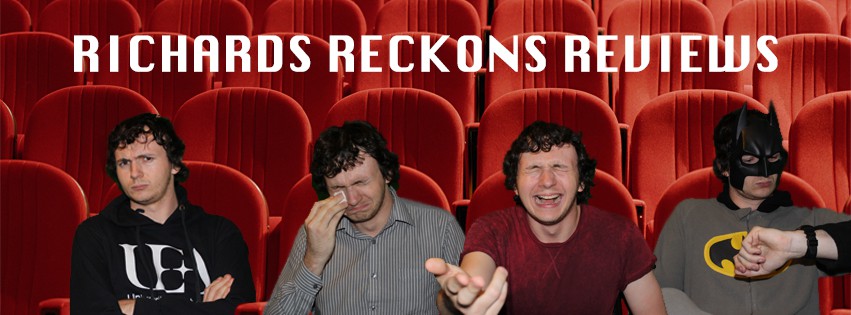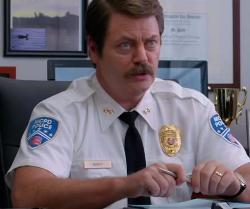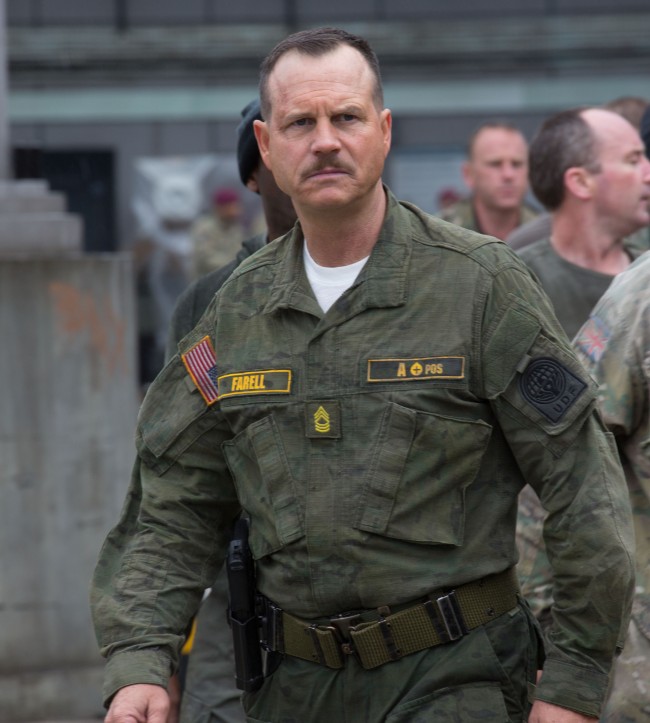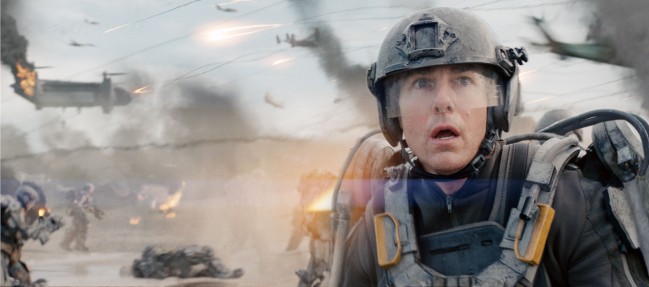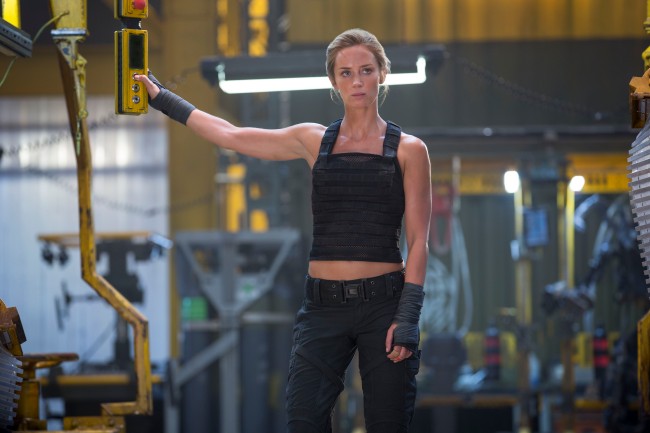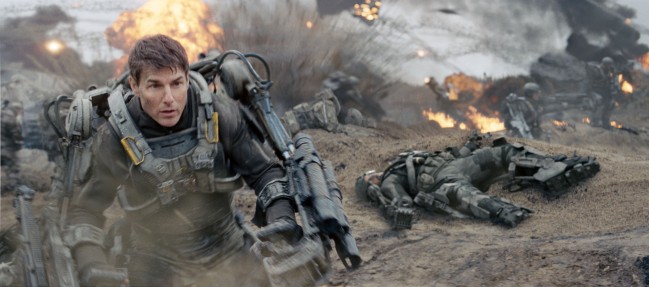Fifty Shades of Grey is a cultural phenomenon. Whether you’ve read the book or not (and whether you can admit that you’ve read it or you’re one of those “oh my FRIEND has read it” people), everybody has heard of it and has at least a general idea what it’s about – girl meets rich man who is into BDSM and other kinky little ventures. It sounds saucy with a dash of “oh blimey” and a pinch of “ooh matron” if you’re that was inclined; a sex and lust fuelled erotic romp that took the world by storm, with women (and indeed some men) proclaiming from the rooftops that they were waiting for “their Mr Grey” because he’s “the perfect man”. So when a film adaptation of this sultry collection of bound tree shavings was announced, the world went mad – some with anticipation, some with dread. But how is the end product?

Just in case you want more of the plot, here it is; the superhero/secret-agent-ish-named Anastasia Steele (Dakota Johnson) is an English Literature student who one day fills in for her sick roommate by going to interview extremely wealthy businessman Christian Grey (Jamie Dornan). After their initial meeting, Grey appears at the hardware store where she works (like a stalkery, well dressed vampire), and arranges a photoshoot and then coffee. After he finds her acceptable, he asks her to sign a contract; the deal being that she is essentially his submissive sexual slave to be bound up and have his way with her whenever she pleases, and in return she gets, in his words (well, word), “him”. And a nice room with big windows. But is that enough, and will Ana find a “normal” relationship within Christian’s grasp?

Before I get to anything else, I’ll say this; for a film all about lust, urges and sexual relations of the kinky kind, Fifty Shades of Grey really quite boring.

It’s dull. It starts out with really hamfisted bantering between the two ladened with innuendo that is as subtle as an aeroplane with a banner saying “THEY ARE GOING TO HAVE SEX IN THIS FILM!!!!!”. There’s a similar approach to metaphoric imagery – Ana with a Christian Grey pencil near her lips and mouth (essentially that aeroplane again saying “IT’S A SUBSTITUTE PENIS!!!”); Ana quite literally getting wet in the rain after seeing Christian for the first time (that aeroplane again saying… well, I don’t really need to explain that). It’s all a bit in your face, really, preluding what’s to come. When they do come, the sex scenes are few and far between, and when they’re there they lack impact; they’re actually ironically quite constrained, as if THEY’VE been bound and gagged too. All the action seems to happen in the peripheral vision of the camera, and while it’s cut nicely it’s not exactly… exciting, really. I also find it bizarre that the film so liberally shows female nudity but not male – it’s peenophobic, if you will. That’s usually the case but with a film about such sexual freedom it seems so contradictory and bizarre. So if you’re looking for fun or gratification from those scenes, then you won’t find it.

Secondly, there’s little to no chemistry at all between the two leads. Ana seems to do this weird and annoying thing I’ve rarely come across in real life where if Christian Grey blinks or exhales carbon dioxide towards her she seems to automatically bite her lip and have a small sensual reaction to it akin to a When Harry Met Sally scene; maybe either 1) she’s actually got some sort of hyper-orgasmic allergic reaction to his musk or 2) the writers are trying to use it as some sort of shortcut to electricity between them, which doesn’t work. Dakota Johnson, coincidentally, is the best thing about the film – bringing a lot of vulnerability as well as power to the main role.

She doesn’t have a lot to work with here either, with the dialogue being so unbelievably poor that I sighed at a lot of lines. This is almost definitely due to the original author, EL James, being present on set and vetoing any kind of diversion away from the (legendarily poorly written) source material. There are a couple of lines that get laughs that you can just tell are additions because they add spark. When Jamie Dornan is forced to say things like “I don’t make love. I f*ck… hard”, “laters baby” and “I’m fifty shades of f*cked up” (get it? It’s ALMOST the movie title!) it gets giggles more than swoons because of just how badly worded it is, bordering on parody. It doesn’t help either that Jamie Dornan doesn’t really seem like he’s trying with Christian at all – he has money, sure, and is into BDSM (Grey that is, not Dornan, I don’t know him that well), but he has little to no personality whatsoever as Christian Grey.

Which finally brings me to perhaps my biggest problem with the film; Christian Grey himself. He’s a big part of the film, what with his name being in the ruddy title and all. He’s presented as this loveable dreamboat of a man who has it all; money, looks, a nice body (if that’s what you’re into)… more money. But he lacks a personality – and, more than that, his behaviour is absolutely abhorrent. He’s a possessive stalker who just “turns up” where Ana is (whether it’s her workplace, a nightclub, HER HOME or in ANOTHER STATE) as if he’s apparated there (probably from Knockturn Alley) without her consent and often demands sex from her; he physically fights off any other male who even talks to her; he, through the contract, restrains her from her own free will – not letting her drink or eat or go where she wants without his permission. And all of this is presented as if it’s like a charming quirk and part of the BDSM – which it is NOT, at all. It makes his behaviour seem acceptable rather than what it is; creepy, horrifying and abusive.

In summary (or TLDR as the kids say), while it looks good (props to director Sam Taylor-Johnson for trying her hardest from the source material) and nicely monochromatic and has an admittedly very good soundtrack (Beyonce and Haim’s turns are particularly good), Fifty Shades of Grey is a dull and often creepy piece of work featuring two main characters who have no chemistry and varying levels of quality in their performances (Johnson good, Dornan not so). You get the feeling that this is the best they could have gotten without rewriting the dialogue from the source (which they would have done if it weren’t for EL James), but it’s still not enough to leave the target audience or myself satisfied.
